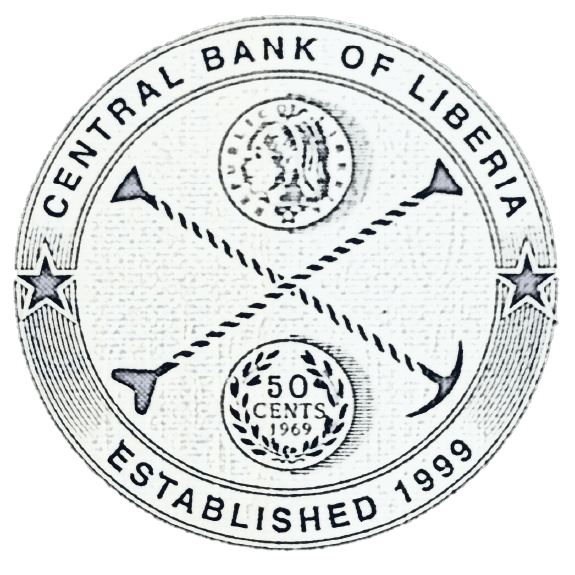
PRESS STATEMENT BY THE EXECUTIVE GOVERNOR OF THE CENTRAL BANK OF LIBERIA, HON. MILTON A. WEEKS ON THE CURRENT EXCHANGE RATE DEVELOPMENTS JULY 14, 2016
The issue of the Liberian dollar depreciating against the US dollar has received public attention lately through the media. While the Central Bank of Liberia (CBL) hails and applauds efforts by some local news media to provide relevant information to the public, the Bank will not encourage any misrepresentation of the facts from some quarters. The Bank as an institution is sensitive to issues that border on the wellbeing of the public, as such; the Bank is responsible to provide relevant information regarding exchange rate developments. Thus, this release seeks to address the concerns of Liberians and provide information on the developments relative to the current level of exchange rate depreciation as well as measures taken to help mitigate the exchange rate pressure.
The Liberian economy grew at an average of 7.8 percent between 2006-2013 prior to the Ebola Virus Disease (EVD) outbreak in 2014. The economy is projected to rebound to a little over 2.0 percent in 2016, buoyed by increased gold production and a rebound in services and construction. However, the attainment of this growth projection may likely be reversed downward due to statistics received during the first half of 2016 on gold (key driver of growth for 2016), rubber, and iron ore production. Consequently, over the medium term (2017-2021), the economy is expected to recover with a projected average growth of 5.8 percent, 2.0 percentage points lower than pre- EVD outbreak level of growth. Nonetheless, the medium-term growth will be driven by the agriculture, forestry, manufacturing and service sectors.
In recent times, the Liberian dollar depreciated due to several underlying factors on account of external, structural and monetary.
Export receipts declined by more than 37 percent in 2015 relative to 2014 as a result of the declines in the country’s primary commodity exports (iron ore and rubber) on the global market. Though, in the same period, import payments also declined by 15.5 percent; however, it was not enough to mitigate the persistent trade deficit. This has caused severe pressure on the foreign exchange market and the revenue generating capacity of the government. Although personal workers’ remittances have increased over the period, the persistent trade deficit has continued to outweigh the impact of the inflow of remittances.
The global commodity price slump continues to adversely impact the growth prospects of the Liberian economy. The prices of the country’s two major export commodities (iron ore and rubber) have experienced prolonged slumps. The average price of iron ore declined by 67.1 percent, from US$168 per metric ton in 2011 to US$51.4 per metric ton recorded in June 2016. The decline continues to affect production, additional investment and the level of employment in the iron ore subsector. This has also undermined government’s revenue generating capacity and its foreign exchange earning capacity. Similarly, global rubber price in recent years has declined significantly which continues to affect production and contribution of the sector to national revenue. The average global price of rubber which was US$2.19 per pound in 2011 has declined by more than 68.0 percent to US$0.67 per pound in June, 2016.
Also, the drawdown of UNMIL, a major spender in the Liberian economy, is affecting micro and medium enterprises and informal workers, many of whom operate in the services sector catering to the domestic market. The drawdown has reduced the inflow of US dollars into the economy, thereby putting further pressure on the Liberian dollar.
To help mitigate the current levels of Liberian dollar depreciation for the first half of 2016, the CBL intervened in the FX market with the amount of US$14.5 million (US$5.0 million in June alone), US$5.0 million lower than the level of intervention made in the same period in 2015. The lower intervention was largely due to policy on reserves accretion. The CBL on July 6, 2016 intervened in the foreign exchange market with US$3.0 million. During that auction, the total demand was US$7.6 million, thus resulting into an oversubscription of US$4.6 million.
It is important to note that as the festive seasons (Independence and Christmas celebrations) approach, demand for foreign exchange to service import payments is usually high as evidenced by this level of oversubscription. Additionally, CBL continues with its regular foreign exchange monitoring and enforcement exercises in order to weed out illegal FX operators from the foreign exchange market.
The CBL also wishes to dispel persistent rumors that the depreciation of the Liberian dollar is due to the printing and release into the market of additional local currency notes. This assertion is simply not true. While the CBL is proceeding with its stated objective of replacing worn and mutilated currency with newly printed bank notes in the shortest possible time, the CBL wishes to state emphatically that to date no additional currency has been released into the system. In fact, working with the fiscal authorities at the Ministry of Finance & Development Planning, the CBL is engaged in a program of mopping up excess Liberian dollar liquidity using available financial instruments with the aim of reducing the level of excess liquidity in the system. The imminent release of the new bank notes will be aimed primarily at replacing worn and mutilated notes. The CBL is however aware that there are some who are hoarding large quantities of Liberian dollar currency instead of using the banking system. Some of these hoarders have the tendency of using these cash hoards to adversely and artificially impact the exchange rate, actions that have the propensity to be interpreted as economic sabotage. The public is however assured that the CBL is devising strategies to encourage the return of these cash hoards to the banking system.
The current volatility in the Liberian dollar exchange rate is not unique to Liberia. A year-on-year comparative analysis of the exchange rate among selected WAMZ countries that are involved with manage float exchange rate shows that at end-June 2016, relative to end-June, 2015 , the Liberian dollar depreciated by 10.5 percent. Similarly, the Naira, Leone, Guinea Franc and Dalasi depreciated by 43.3 percent, 28.6 percent, 22.7 percent, and 20.6 percent, respectively. The depreciation of these currencies is mainly due to declining commodities prices on the global markets.
In conclusion, the CBL will like to assure the relevant authorities and public at large that it will continue to work within its mandate to address this issue given the available monetary instruments. Also, we will continue to collaborate with the Ministry of Finance and Development Planning and other relevant institutions in the area of liquidity management to mitigate the exchange rate depreciation.
In the medium-to-long-term, the Government’s commitment to focus on allocating significant resources towards the provision of infrastructure (mainly energy, road and agro-industry inducing facilities) that promotes economic diversification through value addition especially in the agricultural sector, will reduce our reliance on imports of consumables, resulting in improvement of our export receipts and by extension will strengthen the value of the Liberian dollar.
The Central Bank of Liberia remains committed to safeguarding the financial sector and using all tools available at its disposal in protecting the interest of our country and its people by ensuring the continued growth and development of our country.
